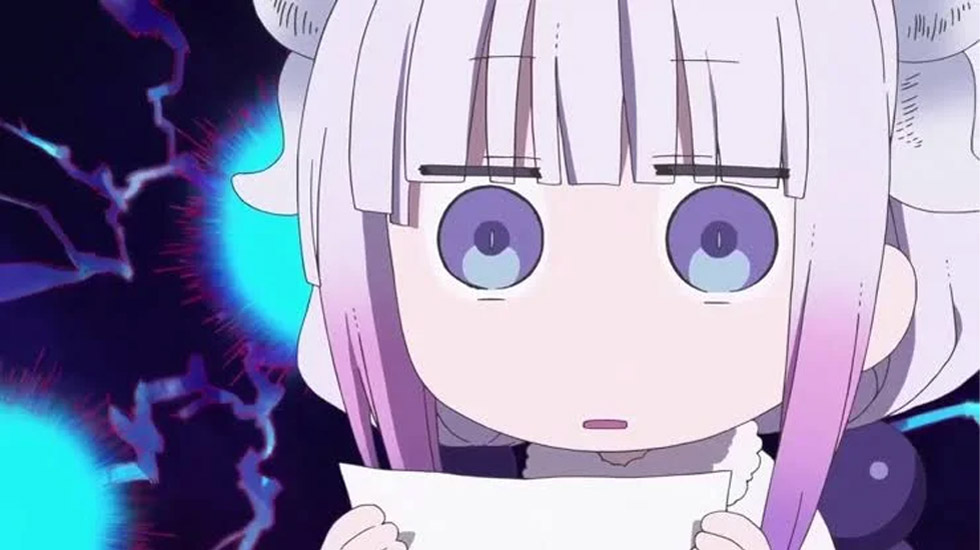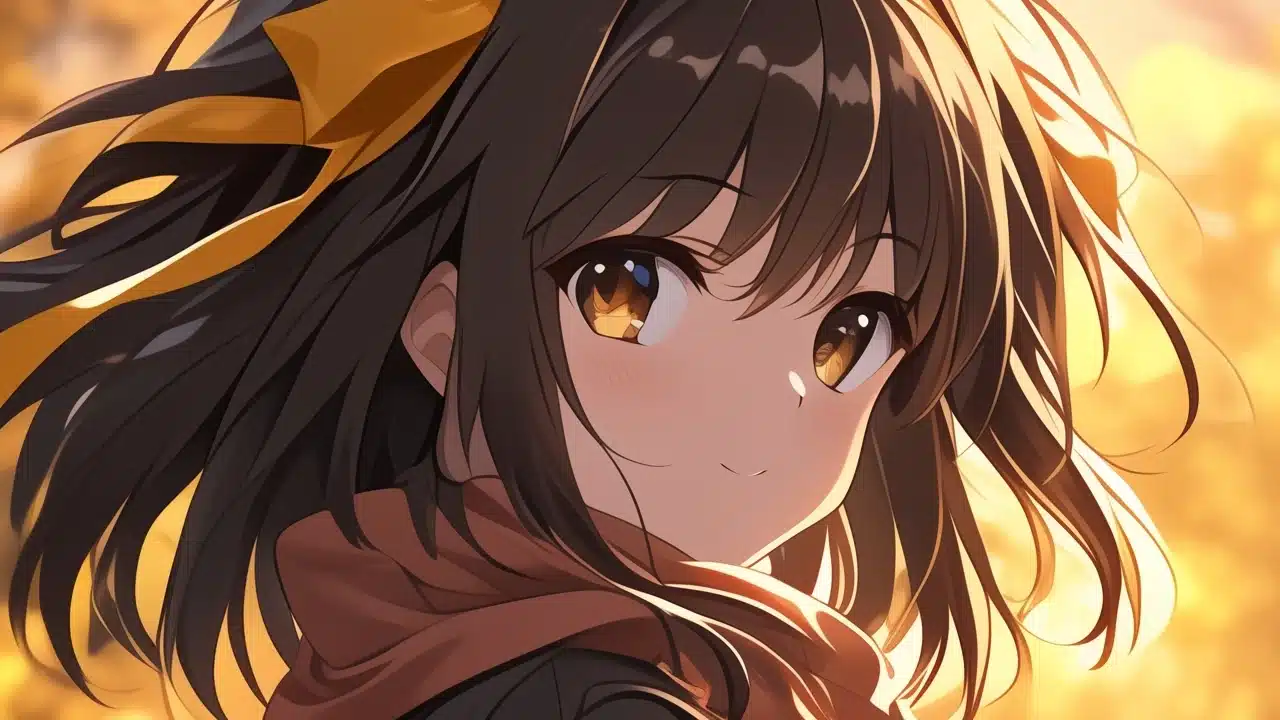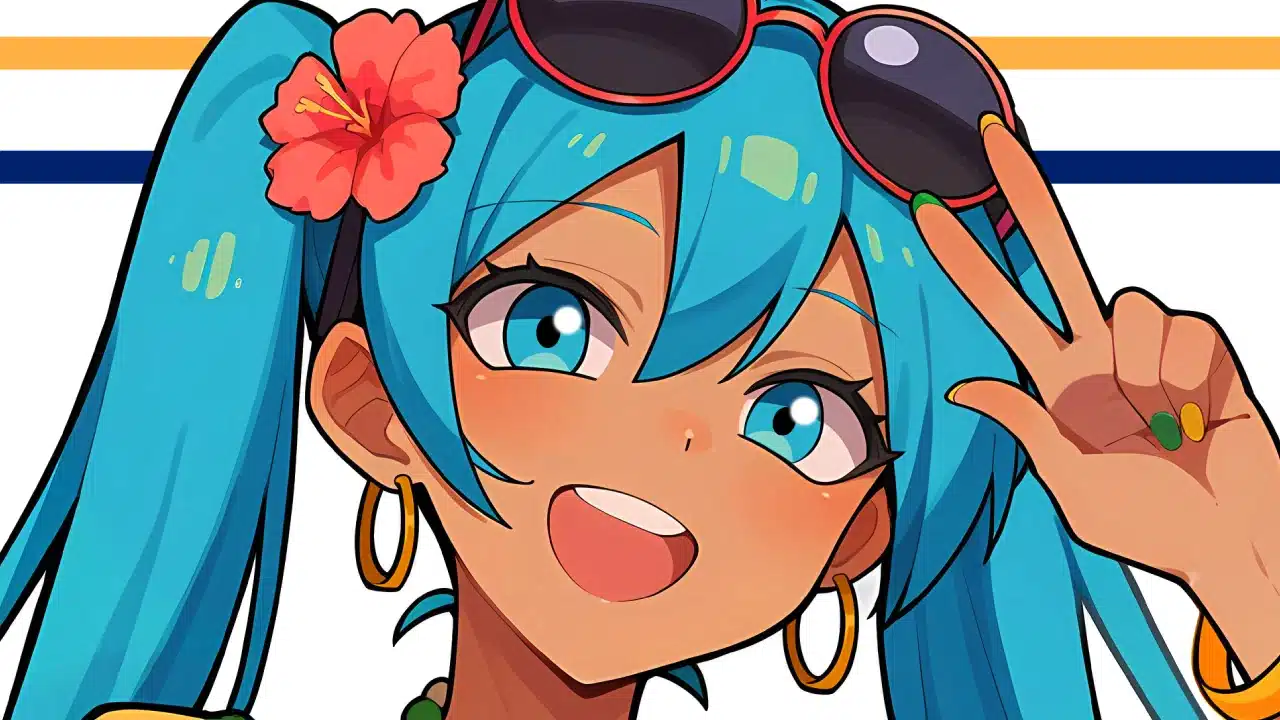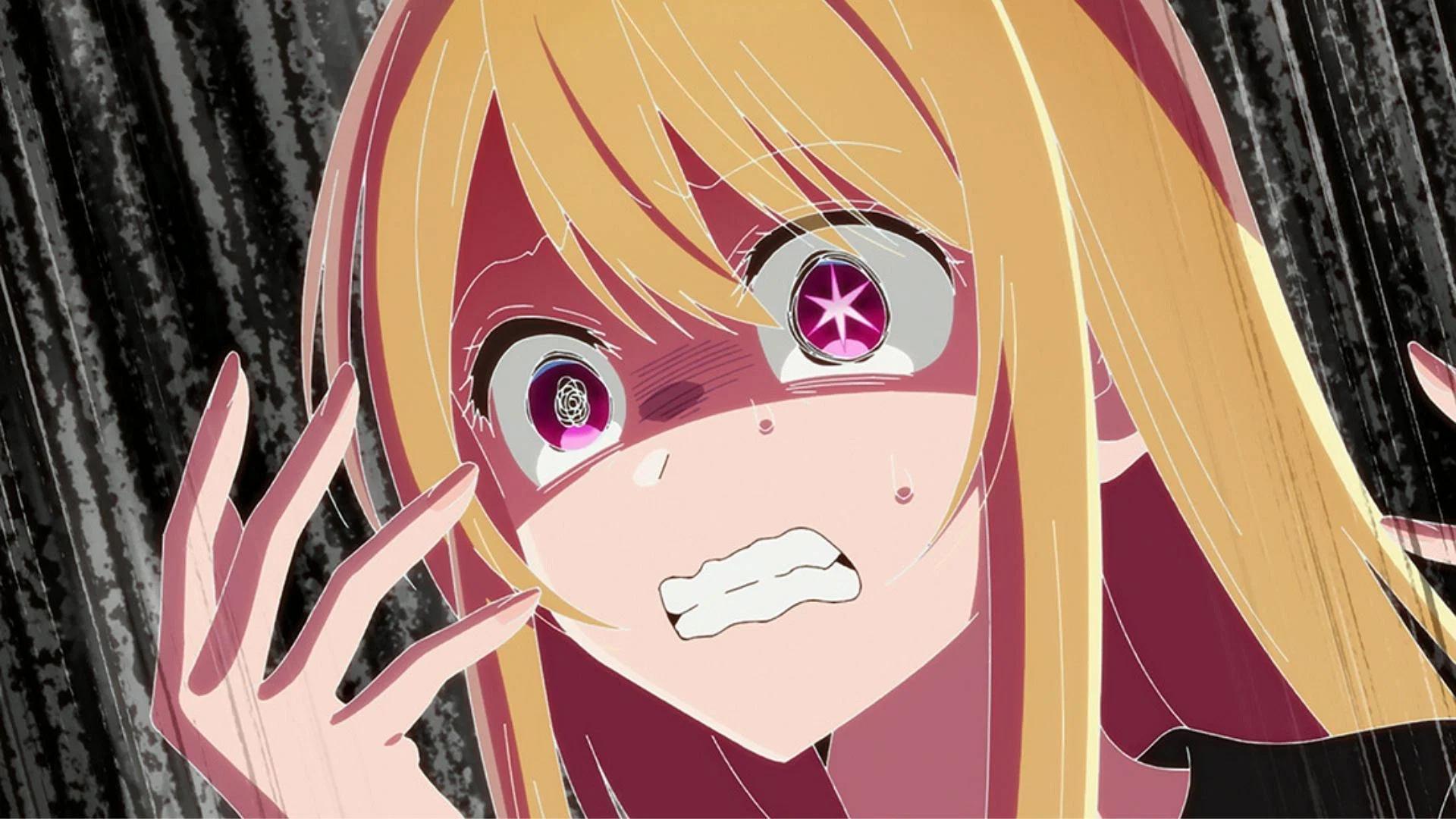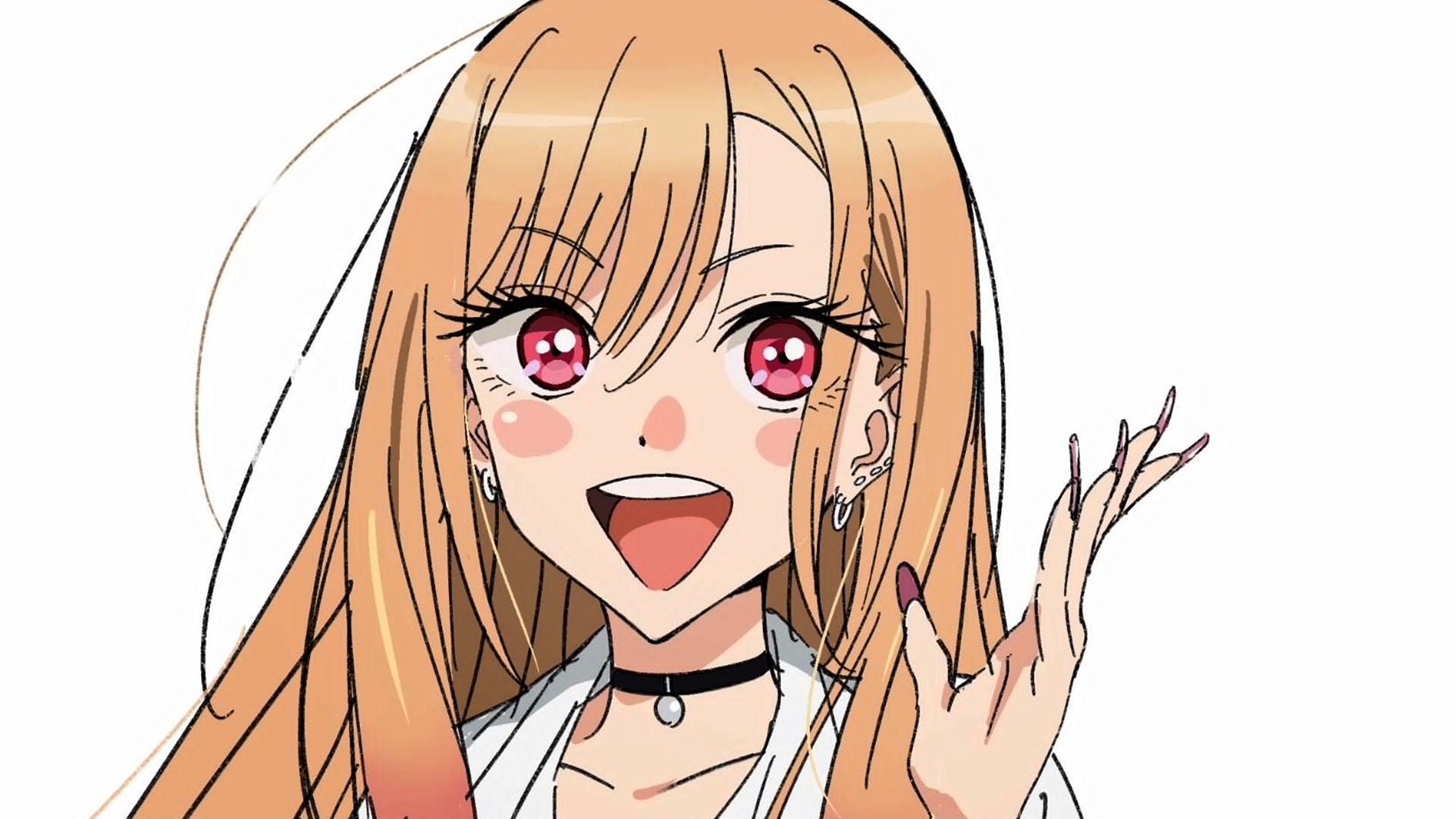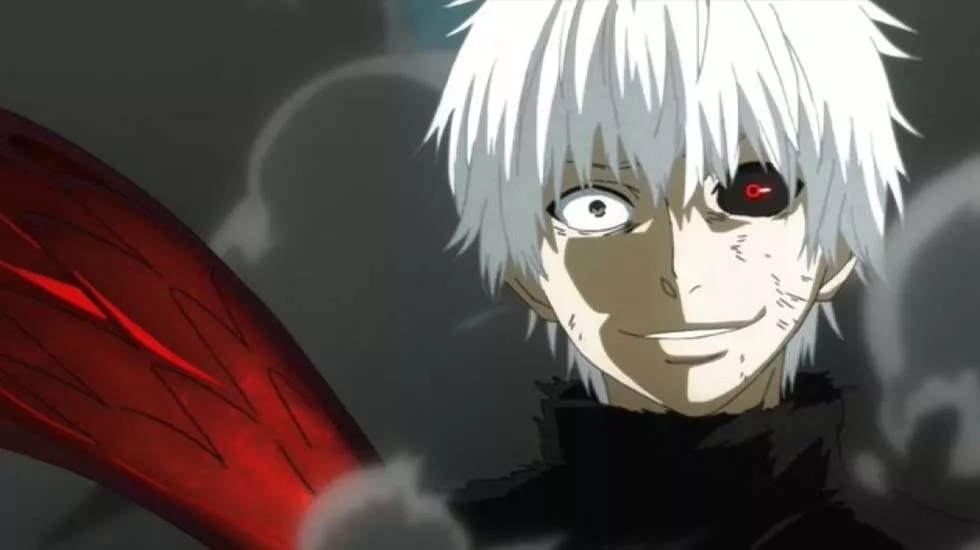Articles and Lists
Beyond the Classics: 6 Underrated Sports Anime You Need to Know
Advertisement
When you examine the most beloved and renowned sports anime ever released, it becomes immediately apparent why they have captured the imagination of so many.
The best sports anime series weave together character stories, trials, and triumphs. They also address crucial themes like friendship, adversity, family, and commitment.
What sets the cream of the crop apart is their ability to garner acclaim and fervent devotion, earning recognition not only as the pinnacle of their genre, but as some of the greatest anime productions of all time.
Here are some underrated gems you should check out this spring season.
6. Stars Align
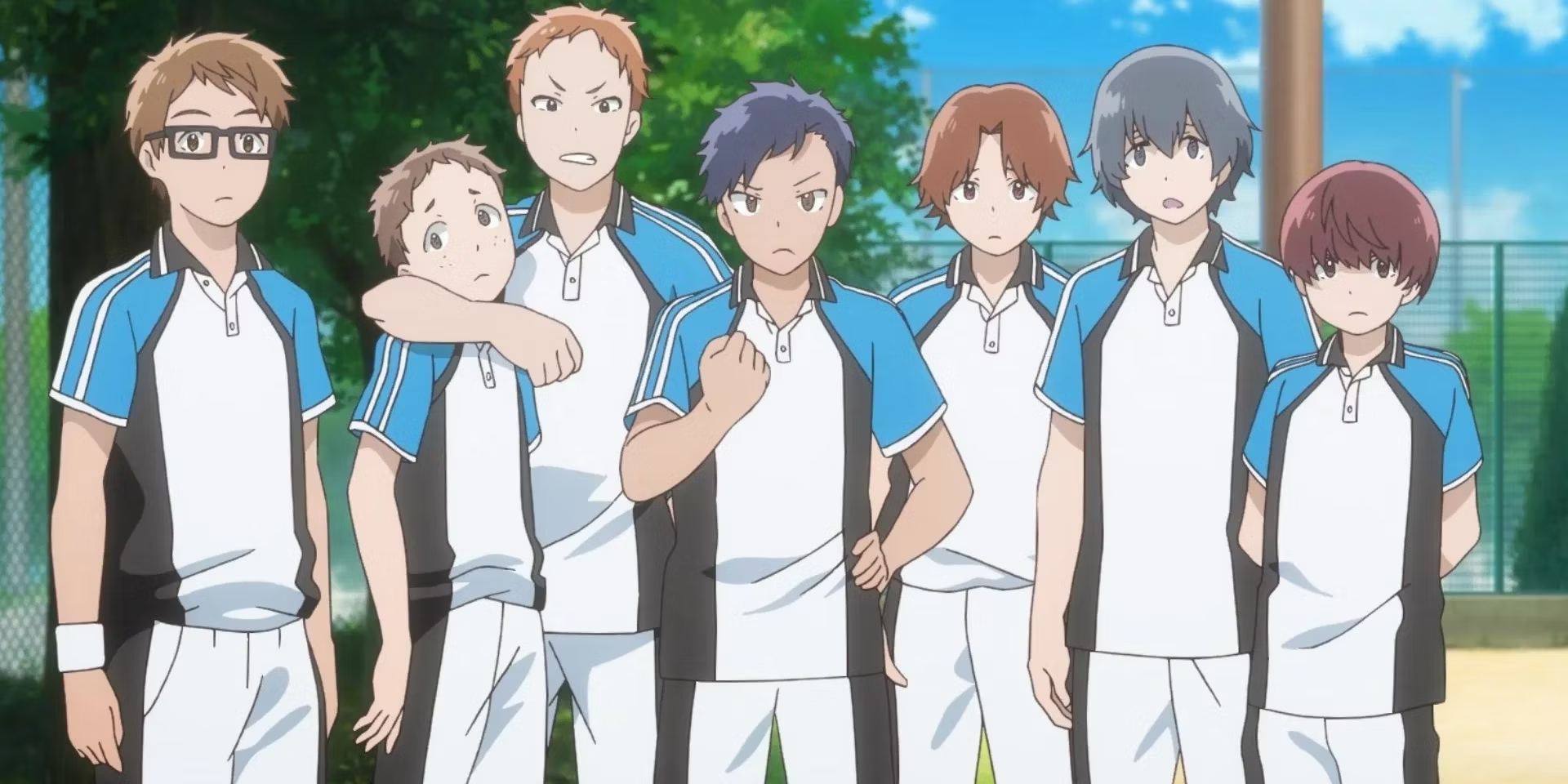
Unless a studio boasts enough name recognition to maintain momentum on its own, original anime series not based on existing material risk fading into obscurity.
Without a built-in fanbase to rely on, these series often require some unique selling point, like a renowned director or a distinctive setting, to capture attention.
Stars Align, while not entirely unknown, falls into the category of relatively obscure modern sports anime. However, its narrative stakes set it apart from the genre's typical offerings.
Centered around a school's soft tennis club, the anime follows the team's journey as its members gain confidence and work towards their goal of competing in an inter-school tournament.
While this premise may sound familiar, Stars Align diverges by placing significant emphasis on the characters' lives beyond the tennis court.
Many of the characters deal with complex family dynamics, with the show touching on themes of bullying and even child abuse. While these topics lead to some challenging moments, the tone remains hopeful. Most importantly, Stars Align approaches these sensitive subjects with maturity and nuance.
“Stars Align” (Hoshiai no Sora) is an original Japanese anime series produced by Eight Bit. Directed by Kazuki Akane, the series aired from October to December 2019.
“Stars Align” blends elements of slice-of-life, drama and sports genres to tell a moving story about a middle school tennis team facing personal struggles and societal pressures.
With its focus on character development, social commentary and emotional storytelling, “Stars Align” delivers a thought-provoking and resonant viewing experience.
The story of “Stars Align” revolves around the members of the Soft Tennis Club at East High School, a struggling team with a diverse cast of characters.
The club's new coach, Toma Shinjo, seeks to revitalize the team and help its members reach their full potential.
However, as Toma delves deeper into the lives of the club members, he discovers that each of them is dealing with their own personal challenges and secrets.
The series explores themes of family, identity, bullying and societal expectations as it explores the lives of its characters. From abusive homes and absent fathers to gender identity and sexuality, “Stars Align” tackles sensitive topics with sensitivity and nuance.
As the members of the Soft Tennis Club confront their demons and create deep bonds with each other, they embark on a journey of self-discovery, acceptance and growth.
Toma Shinjo: Toma is the new coach of the Soft Tennis Club at East High School, a passionate and determined individual with a troubled past.
Despite facing resistance from club members and school administration, Toma remains steadfast in his commitment to helping the team succeed.
As he forms close bonds with the club members and learns about their struggles, Toma experiences significant growth as he confronts his own demons and finds redemption through training.
Maki Katsuragi: Maki is the star player of the Soft Tennis Club, a talented and enigmatic boy with a troubled home life. Despite his aloof exterior, Maki harbors deep emotional scars from his abusive father and absent mother.
As he forms a close friendship with Toma and his teammates, Maki learns to open up about his past and confront his inner demons, finally finding solace and acceptance within the club.
Supporting Characters: “Stars Align” features a diverse cast of supporting characters, each with their own unique struggles and aspirations. Notable characters include:
Toma's Family: Toma's family plays a significant role in the series, as their dysfunctional dynamics and troubled pasts shed light on Toma's own struggles and motivations.
From his distant relationship with his father to his protective instincts towards his younger brother, Toma's family provides crucial context for his character development.

Club Members: Soft Tennis Club members have their own personal struggles and insecurities, ranging from academic pressure and family expectations to issues of identity and self-esteem.
As they come together as a team, they form deep bonds of friendship and support that help them navigate the challenges of adolescence and school life.
Friendship is a central theme in “Stars Align,” as the members of the Soft Tennis Club form deep bonds with each other despite their differences and hardships.
Through their shared passion for tennis and their unwavering support for one another, they find strength and solace in their friendship, navigating the challenges of adolescence together.
Identity is another key theme in the series, as the characters grapple with issues of self-discovery, acceptance and belonging.
From Maki’s struggle with her abusive family to the club members’ exploration of their gender identity and sexuality, “Stars Align” explores the complexities of identity formation and the search for authenticity in a society that often marginalizes and stigmatizes difference.
Acceptance is a recurring motif in “Stars Align,” as the characters learn to accept themselves and each other for who they are.
Whether it's Toma's acceptance of his troubled past or Maki's journey toward self-acceptance and healing, the series emphasizes the importance of empathy, understanding, and unconditional love in fostering personal growth and well-being.
The animation in “Stars Align” is fluid and expressive, capturing the emotional depth and intensity of the characters’ experiences in stunning detail.
From dynamic tennis matches to quiet moments of introspection, the series’ animation brings the story to life with vibrant energy and visual flair. The character designs are diverse and well-defined, with each character possessing distinct traits and personalities that add depth to the narrative.
The art style of “Stars Align” is realistic and grounded, with a focus on capturing the nuances of everyday life and human emotion. The settings are beautifully rendered, evoking a sense of nostalgia for the suburban landscapes and school environments depicted in the series.
Overall, the art and animation of “Stars Align” complement the narrative perfectly, creating an immersive and engaging viewing experience for audiences.
“Stars Align” received critical acclaim for its poignant narrative, well-developed characters and nuanced exploration of sensitive topics.
The series has been praised for its realistic portrayal of adolescence and social issues, as well as its positive representation of LGBTQ+ characters and relationships. Despite its short run, “Stars Align” left a lasting impact on viewers, sparking important conversations about identity, acceptance, and the power of friendship.
The series' emotional resonance and thought-provoking themes have resonated with audiences around the world, earning it a dedicated fanbase and a reputation as one of the standout anime of its time.
While “Stars Align” may not have achieved mainstream success, it remains a cherished gem in the anime community, celebrated for its bold storytelling and heartfelt portrayal of the human experience.
“Stars Align” is a powerful and emotionally resonant anime that tackles sensitive topics with depth, nuance and compassion.
With its engaging characters, compelling storytelling and stunning animation, the series offers a poignant exploration of friendship, identity and acceptance in the face of adversity.
Whether you're a fan of everyday dramas or simply enjoy stories that explore the complexities of the human experience, “Stars Align” is a must-see film that will leave a lasting impression.
5. Tsurune: Kazemai High School Kyudo Club

In sports anime, 2018's Tsurune often flies under the radar. Centered around archery, the series follows the Kazemai High School club as they navigate personal struggles on their journey to compete at the national level.
While the first season set the stage for a possible sequel, it also provided a satisfying conclusion with significant growth for the protagonist. As a result, while the second season was well-received by fans, it was not considered absolutely necessary.
However, with Tsurune – The Linking Shot – set to premiere in Winter 2023, any doubts were quickly dispelled. True to form, Kyoto Animation delivered stunning visuals for both seasons.
Most importantly, Tsurune – The Linking Shot – continued to look at the character's internal struggles, showing their impact on both individual growth and team dynamics.
“Tsurune: Kazemai High School Kyudo Club” is a Japanese anime series produced by Kyoto Animation. Aired from October to December 2018, “Tsurune” is based on a light novel series written by Kotoko Ayano.
The series follows Minato Narumiya, a high school student who rediscovers his passion for kyudo (Japanese archery) after overcoming personal struggles.
With its beautiful animation, heartfelt storytelling, and exploration of themes such as friendship, teamwork, and self-discovery, “Tsurune” offers a heartwarming and enjoyable viewing experience.
The story of “Tsurune” revolves around Minato Narumiya, a former competitive archer who lost his confidence after experiencing target panic, a form of performance anxiety.
Despite his skill and potential, Minato has abandoned his passion for kyudo and resigned himself to a life without archery. However, when he enters Kazemai High School, Minato is introduced to the school's kyudo club by his childhood friend, Seiya Takehaya.
As Minato reluctantly joins the kyudo club and reunites with old friends and rivals, he embarks on a journey of self-discovery and personal growth. Through the guidance of his coach, Masaki Takigawa, and the support of his teammates;
Minato learns to confront his fears and insecurities, rediscovering his love for Kyudo and finding his place within the team.
Along the way, the members of the Kazemai High School Kyudo Club form deep bonds of friendship and camaraderie as they strive to achieve their goals and overcome the challenges of competitive archery.
Minato Narumiya: Minato is the protagonist of “Tsurune,” a talented archer who struggles with performance anxiety and self-doubt.
Despite his initial reluctance to return to kyudo, Minato is drawn back to the sport by his passion and desire to reconnect with his friends and teammates.
Throughout the series, Minato undergoes significant growth as he confronts his inner demons and learns to trust himself and his abilities, ultimately reclaiming his place as a competitive archer.
Seiya Takehaya: Seiya is Minato's childhood friend and the captain of the Kazemai High School Kyudo Club. A passionate and charismatic leader, Seiya is determined to lead his team to victory and uphold the traditions of kyudo.
Despite his brash demeanor, Seiya cares deeply for his friends and teammates, offering them unwavering support and encouragement as they face challenges both on and off the archery range.
Supporting Characters: “Tsurune” features a diverse cast of supporting characters, each with their own unique personalities and motivations. Notable characters include:
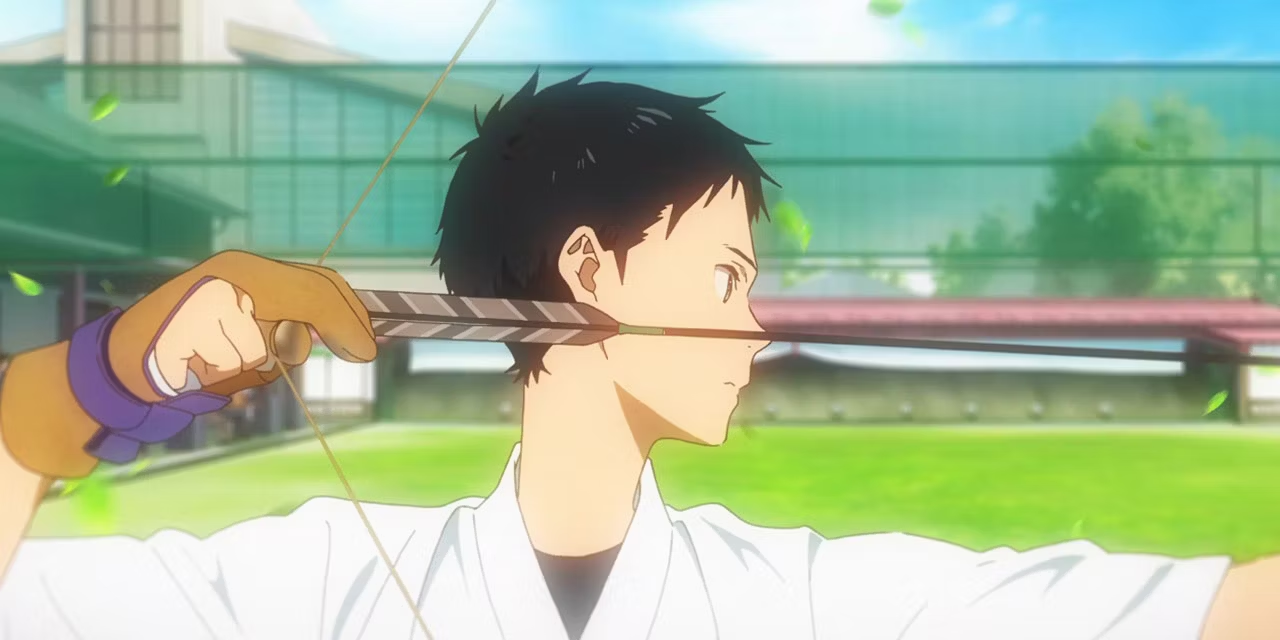
Ryouhei Yamanouchi: Ryouhei is a skilled archer and vice-captain of the Kazemai High School Kyudo Club.
Known for his calm and composed demeanor, Ryouhei serves as a mentor and role model to his teammates, offering guidance and advice to help them improve their skills and overcome obstacles.
Nanao Kisaragi: Nanao is a cheerful and outgoing member of the Kyudo club, known for her friendly personality and positive attitude.
Despite his lack of archery experience, Nanao is determined to support his teammates and contribute to the team's success in any way he can.
Friendship is a central theme in “Tsurune,” as the members of the Kazemai High School Kyudo Club form deep bonds of camaraderie and support.
Through their shared passion for kyudo, they form lasting friendships and overcome challenges together, relying on each other for encouragement and guidance. The series emphasizes the importance of mutual respect, trust, and understanding in fostering meaningful connections with others.
Teamwork is another key theme in “Tsurune,” as the members of the kyudo club learn to work together to achieve their goals and overcome obstacles.
Whether coordinating their moves during competitions or supporting each other through personal struggles, the team relies on cooperation and collaboration to succeed.
The series highlights the transformative power of teamwork to promote personal growth and achieve shared goals.
Self-discovery is a recurring motif in “Tsurune,” as the characters struggle with their own insecurities, fears and aspirations.
Through their kyudo experiences and interactions with their peers, they learn valuable lessons about identity, purpose, and resilience. The series encourages viewers to embrace their individuality, pursue their passions, and strive for personal growth and fulfillment.
The animation in “Tsurune” is breathtaking, characterized by its fluid movement, vibrant colors, and attention to detail.
From the graceful movements of the archers to the tranquil beauty of the natural landscapes, the series' animation creates a visually stunning and immersive viewing experience.
Kyudo fights are choreographed with precision and elegance, capturing the intensity and drama of competitive archery with stunning realism.
The art style of “Tsurune” is warm and inviting, focusing on capturing the tranquil beauty of the Japanese countryside and the serene atmosphere of the kyudo dojo.
The character designs are expressive and nuanced, conveying a wide range of emotions and personalities with subtlety and depth. Overall, the art and animation of “Tsurune” complement the narrative perfectly, heightening the emotional impact of the series.
“Tsurune” received widespread acclaim for its compelling characters, beautiful animation, and heartfelt storytelling.
The series was praised for its sensitive portrayal of mental health issues such as performance anxiety and self-doubt, as well as its exploration of themes such as friendship, teamwork and self-discovery.
“Tsurune” struck a chord with audiences around the world, earning a dedicated fanbase and critical acclaim for its authenticity, emotional depth, and positive representation of kyudo culture.
The series’ impact extended beyond the anime community, sparking renewed interest in kyudo and inspiring viewers to explore traditional Japanese martial arts for themselves. “Tsurune” also received numerous awards and nominations, further cementing its status as a beloved and influential anime series.
“Tsurune: Kazemai High School Kyudo Club” is a poignant and emotionally resonant anime that explores themes of friendship, teamwork, and self-discovery with depth, nuance, and sensitivity.
With its beautiful animation, engaging characters, and heartfelt storytelling, the series delivers an enjoyable and engaging viewing experience that will leave a lasting impression on audiences. Whether you’re a fan of sports anime or simply enjoy stories that celebrate the human spirit, “Tsurune” is a must-watch film that will inspire, entertain, and touch your heart.
4. Baby Steps

Directed by Masahiko Murata, known for his work on several Naruto films and TV episodes, Baby Steps takes a more grounded approach to storytelling.
The series follows Eiichirou Maruo as he gradually comes to terms with the realization that he is pursuing academic studies out of obligation rather than genuine passion.
Viewers can easily relate to Maruo's journey of self-discovery, particularly as he begins to develop his own unique playstyle alongside fellow first-year Natsu.
The satisfaction of witnessing their growth is amplified by the expert animation of the tennis matches, adding an extra layer of fun to the series.
“Baby Steps” is a Japanese sports anime series adapted from the manga of the same name written and illustrated by Hikaru Katsuki.
Produced by Studio Pierrot, the anime aired from April 2014 to September 2015. Unlike many sports anime that focus on highly skilled protagonists with natural talent;
“Baby Steps” stands out for its realistic portrayal of tennis and its emphasis on hard work, dedication and incremental improvement.
With its engaging storyline, well-developed characters, and emphasis on character growth, “Baby Steps” offers a refreshing and inspiring take on the sports genre.
The story of “Baby Steps” follows Eiichiro Maruo, a studious and analytical high school student who lacks physical fitness and athletic ability.
While searching for a way to improve his health, Eiichiro discovers a passion for tennis after taking lessons at a local tennis school. Inspired by the challenge of the sport and the opportunity for personal growth, Eiichiro sets his sights on becoming a professional tennis player.
As Eiichiro delves deeper into tennis, he encounters numerous challenges and obstacles on his journey to mastery.
From learning the fundamentals of the sport to competing in tournaments and facing formidable opponents, Eiichiro must overcome his limitations and strive to achieve his goals. Along the way, he forms close friendships, discovers his own strengths and weaknesses, and learns valuable lessons about perseverance, resilience, and the importance of passion and dedication.
Eiichiro Maruo: Eiichiro is the protagonist of “Baby Steps,” a highly intelligent and analytical high school student with a passion for learning.
Despite lacking athletic ability and physical prowess, Eiichiro discovers a natural talent for tennis and becomes determined to pursue it as a career.
Throughout the series, Eiichiro undergoes significant growth as he learns to overcome his weaknesses, develop his skills, and adapt to the challenges of competitive tennis.
His journey from a rookie player to a rising star is a testament to his hard work, dedication and unwavering commitment to his goals.
Natsu Takasaki: Natsu is a skilled tennis player and Eiichiro's classmate and love interest. Initially introduced as a rival to Eiichiro, Natsu becomes a supportive friend and mentor as he recognizes his dedication and passion for the sport.
Natsu's own experiences as a tennis player provide valuable insight and guidance to Eiichiro as he navigates competitive tennis and strives to reach his full potential.
Supporting Characters: “Baby Steps” features a diverse cast of supporting characters, each with their own unique personalities and motivations. Notable characters include:

Takuma Egawa: Takuma is a talented tennis player and Eiichiro's friend and rival. Despite their competitive relationship, Takuma respects Eiichiro's dedication and determination and serves as a source of inspiration and motivation for him.
Coach Aoi: Coach Aoi is the coach of the Southern Tennis Club, where Eiichiro trains and competes.
With his vast experience and knowledge of the sport, Coach Aoi provides valuable guidance and support to Eiichiro and his teammates as they strive to improve their skills and achieve their goals.
Hard work is a central theme in “Baby Steps,” as Eiichiro learns that success in tennis requires dedication, perseverance, and a willingness to push oneself beyond one’s limits.
From rigorous training regimens to grueling matches against formidable opponents, Eiichiro discovers that there are no shortcuts to success and that achieving one's goals requires unwavering commitment and effort.
Perseverance is another key theme in the series, as Eiichiro faces numerous setbacks and challenges on his journey to becoming a professional tennis player. Whether dealing with injuries, losses, or self-doubt, Eiichiro learns to persevere in the face of adversity and to never give up on his dreams.
His resilience and determination serve as an inspiration to his friends and teammates, motivating them to strive for excellence in their own pursuits.
Growth is a recurring motif in “Baby Steps,” as Eiichiro undergoes significant personal and athletic development throughout the series.
From improving his technical skills and strategic thinking to developing his mental fortitude and emotional resilience, Eiichiro learns valuable lessons about self-discovery, self-improvement, and the importance of embracing challenges as opportunities for growth.
The animation in “Baby Steps” is clean and fluid, with a focus on capturing the complexities of tennis matches and the emotions of the characters.
Tennis matches are choreographed with precision and realism, showcasing the speed, power and strategy of the sport in stunning detail. Character designs are simple yet expressive, conveying a wide range of emotions and personalities with subtlety and nuance.
The art style of “Baby Steps” is bright and colorful, with a vibrant aesthetic that reflects the energy and excitement of competitive sports.
The environments are detailed and immersive, giving the series a sense of depth and realism. Overall, the art and animation in “Baby Steps” complement the narrative perfectly, enhancing the viewing experience and immersing viewers in the competitive tennis.
“Baby Steps” received positive reviews from critics and audiences for its realistic depiction of tennis, engaging storyline and well-developed characters.
The series has been praised for its emphasis on hard work, perseverance and personal growth, as well as its positive portrayal of the sport of tennis. “Baby Steps” has also garnered a dedicated fan base and inspired viewers to pursue their own passions and goals with determination and commitment.
While “Baby Steps” may not have achieved the same level of mainstream success as some other sports anime series, it remains a beloved and influential entry in the genre, celebrated for its authenticity, relatable characters, and inspiring message of self-improvement and achievement.
“Baby Steps” is a refreshing and inspiring sports anime that offers a realistic and engaging portrayal of tennis and the journey of personal growth and self-discovery.
With its well-developed characters, engaging storyline, and emphasis on hard work, perseverance, and growth, “Baby Steps” is a must-watch for sports anime fans and anyone looking for an inspirational and motivational story.
Whether you are a tennis enthusiast or simply enjoy stories of determination and achievement, “Baby Steps” is sure to leave a lasting impression.
3. One Outs

While most sports anime incorporate elements beyond the sport itself, One Out stands out as a unique entry in the genre.
Taking more inspiration from gambling anime like Kaiji and Akagi than traditional sports series like Ace of Diamond, One Outs is centered around baseball but feels more like a psychological thriller.
The story follows Toua Tokuchi, who joins the Saikyou Saitama Lycaons after demonstrating his skills in a game of One Out, a high-stakes version of baseball.
What follows is a battle of wits between Toua and the club owner, resulting in an engaging and intense narrative. With its extremely cool protagonist and thrilling plot, One Out captivates viewers from start to finish.
However, while One Out is undeniably amazing, it may not fully satisfy those looking for a traditional sports anime experience due to its departure from the genre’s conventions. However, for fans of psychological dramas and intense storytelling, One Outs is an absolute must-watch.
“One Out” is a Japanese anime series adapted from the manga of the same name written by Shinobu Kaitani. Produced by Madhouse, the anime aired from October 2008 to March 2009. Unlike traditional sports anime, “One Out” combines the intensity of baseball with high-stakes gambling and psychological warfare;
resulting in a unique and thrilling viewing experience. With its gripping storyline, complex characters and strategic gameplay, “One Out” offers an engaging exploration of power dynamics, manipulation and the pursuit of victory at any cost.
The story of “One Outs” revolves around Tokuchi Toua, a highly skilled and enigmatic pitcher who joins the troubled Lycaons baseball team.
Tokuchi possesses an uncanny ability to read his opponents' movements and exploit their weaknesses, earning him the nickname "One Outs" for his ability to win one-on-one duels against batters.
However, Tokuchi's true talent lies in his mastery of psychological manipulation and strategic deception, using his intellect and cunning to outwit his opponents and secure victory.
As Tokuchi leads the Lycaons to unprecedented success on the baseball field, he attracts the attention of powerful businessmen and gamblers looking to exploit his talents for their own gain.
Through a series of high-stakes gambling matches known as “One Out,” Tokuchi enters a dangerous game of wits and deception;
facing relentless opponents who will stop at nothing to defeat him. With each match, Tokuchi must use his wits and cunning to navigate the treacherous world of professional baseball and emerge victorious against seemingly insurmountable odds.
Tokuchi Toua: Tokuchi is the protagonist of “One Outs,” a mysterious and calculating pitcher with a genius-level intellect and a talent for psychological manipulation.
Despite his distant and enigmatic demeanor, Tokuchi possesses a strong sense of justice and a desire to protect his teammates and the integrity of the game.
Throughout the series, Tokuchi undergoes significant character development as he confronts his past, struggles with his morality, and forms deep bonds with his teammates.
Hiromichi Kojima: Kojima is the captain and star hitter of the Lycaons baseball team, a veteran player with a fierce competitive spirit and a strong sense of loyalty.
Initially skeptical of Tokuchi's unconventional methods, Kojima comes to respect and admire Tokuchi's intelligence and strategic prowess upon witnessing the pitcher's incredible ability to lead the team to victory.
Their partnership forms the heart of the series, as they work together to overcome their opponents and achieve success on the baseball field.
Supporting Characters: “One Out” features a diverse cast of supporting characters, each with their own motivations and agendas. Notable characters include:

Kinosaki: Kinosaki is the manager of the Lycaons baseball team, a shrewd and pragmatic businessman who sees Tokuchi as a valuable asset in increasing the team's profits.
Despite initial conflicts, Kinosaki comes to respect Tokuchi's abilities and forms an uneasy alliance with him to achieve their shared goals.
Saikawa: Saikawa is a powerful and influential businessman who seeks to manipulate Tokuchi for his own gain.
As the mastermind behind the "One Out" betting matches, Saikawa serves as Tokuchi's main adversary, employing ruthless tactics and psychological warfare to defeat the pitcher and assert his dominance.
Power is a central theme in “One Outs,” as Tokuchi and his opponents engage in a constant struggle for dominance and control.
Whether on the baseball diamond or in the high-stakes world, characters compete for power and influence, using their intellect, charisma and resources to outwit their rivals and achieve their goals.
Deception is another key theme in the series, as Tokuchi employs a variety of tactics and strategies to deceive his opponents and gain the upper hand.
From feints and misdirection to psychological mind games and calculated risks, Tokuchi uses his intellect and cunning to manipulate his opponents and exploit their weaknesses, often surprising them with his unorthodox methods and unconventional approach to the game.
Morality is a recurring motif in “One Outs,” as Tokuchi struggles with the ethical implications of his actions and the consequences of his decisions.
While Tokuchi is willing to bend the rules and use any means necessary to achieve victory, he ultimately struggles with his conscience and questions the morality of his actions;
especially when they come at the expense of his teammates or the integrity of the game. Through his interactions with his opponents and allies, Tokuchi confronts his own values and beliefs, ultimately striving to find a balance between his desire for success and his sense of honor.
The animation in “One Outs” is dynamic and fluid, with a focus on capturing the intensity and excitement of baseball games and high-stakes stakes.
Baseball matches are choreographed with precision and realism, showcasing the speed, power and strategy of the sport in stunning detail.
The character designs are distinct and memorable, with each character possessing unique traits and personalities that add depth to the narrative.
The art style of “One Out” is bold and dynamic, with a gritty aesthetic that reflects the intensity and suspense of the series.
The environments are detailed and immersive, bringing a sense of realism and authenticity to professional baseball and high-stakes gambling.
Overall, the art and animation of “One Outs” complement the narrative perfectly, enhancing the viewing experience and immersing audiences in the exciting and unpredictable world of the series.
“One Out” received widespread acclaim for its engaging storyline, complex characters, and strategic gameplay.
The series was praised for its unique blend of baseball elements and psychological thriller, as well as its exploration of themes such as power, deceit, and morality.
“One Outs” has garnered a dedicated fanbase and critical acclaim for its innovative take on the sports genre, earning praise from anime enthusiasts and baseball fans alike.
While “One Out” may not have achieved the same level of mainstream success as some other sports anime series, it remains a beloved and influential entry in the genre, celebrated for its suspenseful storytelling, memorable characters, and thought-provoking themes.
The series' impact has endured over the years, inspiring viewers to appreciate the strategic complexity and psychological depth of both baseball and anime storytelling.
“One Out” is a gripping and suspenseful anime series that combines the thrill of baseball with the intrigue of psychological warfare. With its gripping storyline, complex characters, and strategic gameplay, “One Out” delivers a thrilling and unpredictable viewing experience that will keep audiences on the edge of their seats from start to finish. Whether you’re a fan of sports anime or psychological thrillers, “One Out” is a must-watch and will leave a lasting impression.
2. Free!
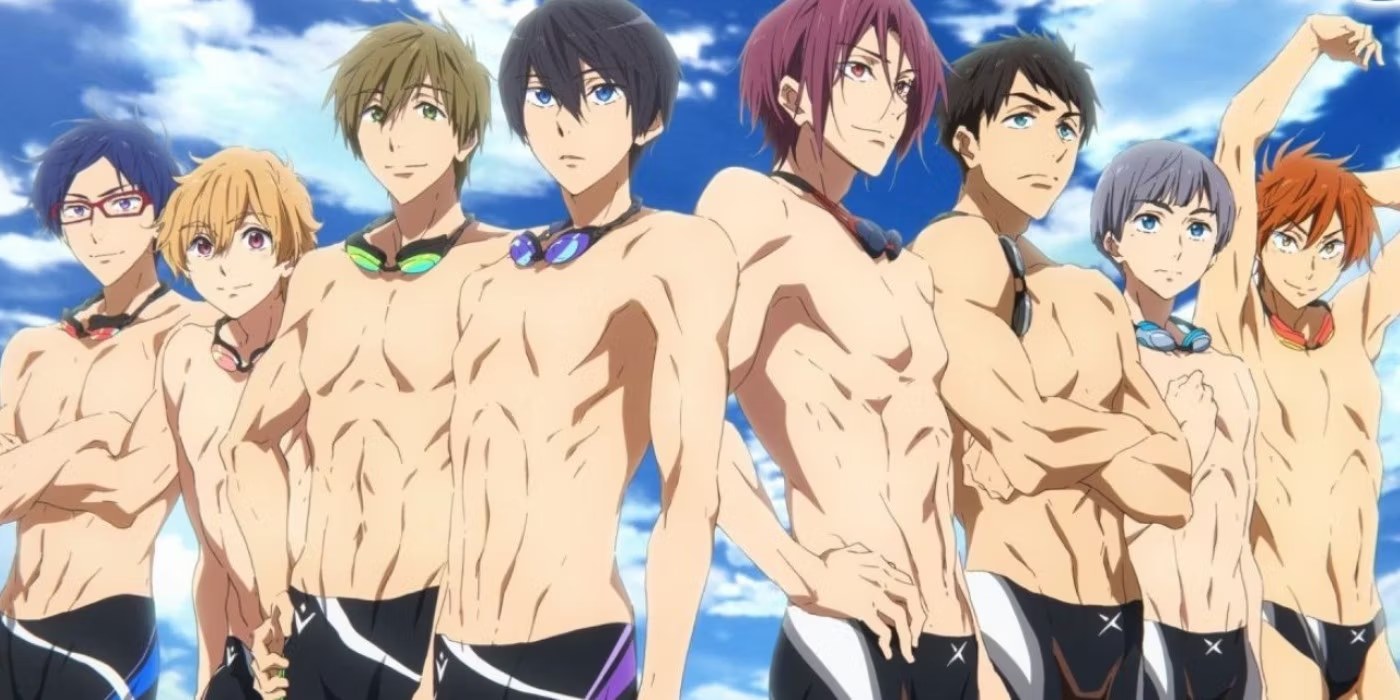
For those who have fond memories of being part of a swim team or simply enjoy the fan-service aspects of sports anime, Free! is an ideal choice.
The series originated from a sample animation reel created by Kyoto Animation, which attracted massive demand from anime fans for a full production.
As a result, Free! quickly gained popularity, leading to the creation of additional seasons such as Eternal Summer, Take Your Marks and Dive Into The Future, along with a short film.
However, Free! offers much more than just muscular men in swimsuits. The show delves into the complexities of friendships and relationships between the main characters, making for a riveting drama.
With each subsequent season, Free! continues to evolve and improve, offering viewers a rich and engaging storyline beyond its initial premise.
“Free!” is a Japanese anime series produced by Kyoto Animation and Animation Do. Airing from July to September 2013, the series, also known as “Free! – Iwatobi Swim Club,” quickly gained popularity for its good storyline, beautifully animated swimming sequences, and relatable characters.
Set against the backdrop of competitive swimming, “Free!” explores themes of friendship, rivalry and self-discovery as a group of high school boys come together to revive their school’s swim club.
With its engaging characters, heartfelt storytelling and stunning animation, “Free!” offers a refreshing and uplifting take on the sports genre.
The story of “Free!” follows Haruka Nanase, a talented swimmer with a deep passion for the water. Haruka, along with his childhood friends Makoto Tachibana and Nagisa Hazuki, used to swim together as part of the Iwatobi Swimming Club in elementary school.
However, after the club disbanded, they went their separate ways. Years later, Haruka and Makoto reunite in middle school, where they are joined by new teammates Rei Ryugazaki and Rin Matsuoka, a former member of their childhood swim team who has returned from studying abroad in Australia.
Together, the five boys formed the Iwatobi High School Swimming Club and focused on competing in the upcoming prefectural tournament.
As they train and prepare for competition, they face challenges in and out of the pool, including personal rivalries, insecurities and doubts about their own abilities.
Along the way, they learn valuable lessons about teamwork, perseverance and the importance of following their passions, ultimately forging deep bonds of friendship that transcend the boundaries of competition.
Haruka Nanase: Haruka is the protagonist of “Free!” and a highly skilled swimmer with a deep connection to the water. Quiet and introspective, Haruka is known for his stoic demeanor and his ability to swim with unparalleled speed and grace.
Throughout the series, Haruka struggles with his own motivations and desires, struggling to find meaning and purpose in his life beyond his love of swimming. As he reconnects with his friends and rediscovers his passion for the sport, Haruka experiences significant growth as he learns to open up to others and embrace the joys of friendship and camaraderie.
Rin Matsuoka: Rin is Haruka's childhood friend and rival, a fiercely competitive swimmer with a burning desire to prove himself on the world stage.
After studying abroad in Australia to pursue his dreams of becoming an Olympic swimmer, Rin returns to Japan with a newfound determination to surpass his former teammates and claim victory in the pool.
However, as he reconnects with Haruka and the others, Rin begins to question his own motivations and priorities, finally realizing that true success lies not in victory, but in the bonds of friendship and the joy of swimming.
Supporting Characters: “Free!” features a diverse cast of supporting characters, each with their own unique personalities and motivations. Notable characters include:
Makoto Tachibana: Makoto is Haruka's best friend and teammate, a kind and caring soul with a talent for swimming and a deep love for the water.
Makoto serves as the heart of the Iwatobi High School Swimming Club, providing emotional support and guidance to his friends as they navigate the challenges of competitive swimming and adolescence.
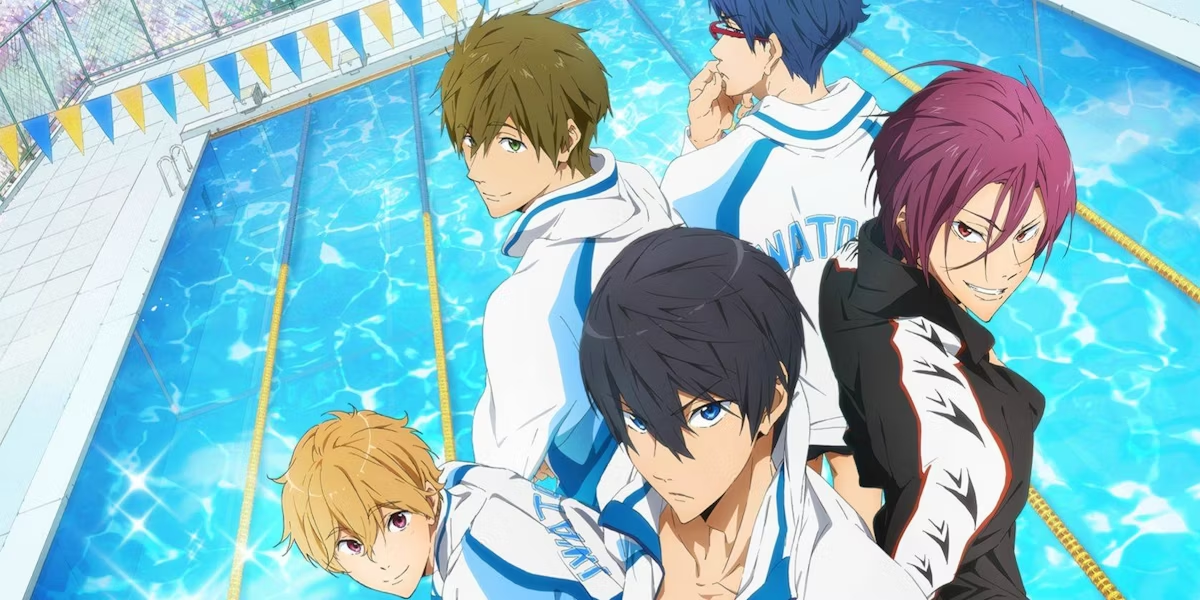
Nagisa Hazuki: Nagisa is the energetic and outgoing member of the Iwatobi High School Swimming Club, known for her enthusiasm and optimism.
Despite her small stature, Nagisa possesses a fierce determination to succeed in the pool, inspiring her teammates with her unwavering passion and spirit.
Friendship is a central theme in “Free!”, as the members of the Iwatobi High School Swimming Club come together to pursue their shared passion for swimming.
Through their experiences in the pool and their interactions with each other, they form deep bonds of camaraderie and support, learning to rely on each other for guidance and encouragement.
The series emphasizes the importance of friendship in overcoming obstacles and achieving success, highlighting the transformative power of genuine connections and shared experiences.
Rivalry is another key theme in “Free!”, as the characters compete against each other and other teams in the pool.
While competition can sometimes breed animosity and tension, “Free!” portrays rivalry as a positive force that drives the characters to push themselves to new heights and strive for excellence.
Through their friendly competition and mutual respect for each other's abilities, the characters learn valuable lessons about sportsmanship, perseverance, and the thrill of competition.
Self-discovery is a recurring motif in “Free!” as the characters struggle with their own identities, aspirations and insecurities.
Whether it's Haruka's search for meaning beyond water, Rin's quest to reconcile her ambition with her friendships, or Makoto's journey to find her place in the world, the series explores the complexities of adolescence and the process of growing up.
Through their swimming experiences and their interactions with teammates and rivals, the characters learn valuable lessons about self-acceptance, resilience, and the importance of following their hearts.
The animation in “Free!” is breathtaking, characterized by its fluid movement, vibrant colors, and attention to detail.
The swimming sequences are choreographed with precision and grace, capturing the elegance and athleticism of the characters as they glide through the water with effortless ease.
The character designs are distinct and memorable, with each character possessing unique traits and personalities that add depth to the narrative.
The art style of “Free!” is lush and expressive, focusing on capturing the natural beauty of the seaside town of Iwatobi and the serenity of the pool.
The backgrounds are richly detailed, evoking a sense of nostalgia for the series' idyllic landscapes and tranquil atmosphere.
Overall, the art and animation in “Free!” complement the narrative perfectly, creating an immersive and visually stunning viewing experience that keeps audiences engaged from start to finish.
“Free!” received widespread acclaim for its engaging storyline, relatable characters, and stunning animation.
The series has been praised for its positive portrayal of friendship and sportsmanship, as well as its empowering message of pursuing one's passions and overcoming obstacles.
“Free!” has also garnered a devoted fanbase and critical acclaim for its diverse cast of characters and its representation of LGBTQ+ themes, particularly in its depiction of the close relationships between the male characters.
While “Free!” may not have achieved the same level of mainstream success as some other sports anime series, it remains a beloved and influential entry in the genre, celebrated for its refreshing take on competitive swimming and its heartfelt exploration of friendship, rivalry, and self-discovery. The series’ impact has endured for more than
1. Girls and Panzer

Girls und Panzer stands out as a contender for the title of weirdest sports anime, at least in terms of conceptual premise.
Surprisingly, the most notable aspect of the series is how seriously it takes itself. While it initially seems to fall into the category of cute girls doing (sort of) cute things, Girls und Panzer quickly establishes its focus on tanks.
Combining popcorn fun with a surprising level of accuracy regarding historical warfare, Girls und Panzer offers an immersive viewing experience.
While the characters are generally likable, the spotlight is firmly on the intense tank battles that dominate the show.
While the initial 12-episode series is enjoyable, the anime really hits its stride with the sequel films, which consistently deliver great entertainment.
“Girls und Panzer” is a Japanese anime series produced by Actas. Airing from October to December 2012, the series gained widespread popularity for its unconventional premise, which combines the moe (cute) aesthetic of high school girls with the thrilling action of tank warfare.
Set in an alternate universe where tank battles are a popular sport, “Girls und Panzer” follows a group of high school girls as they join their school's tank team and compete in tournaments against rival schools.
With its charming characters, thrilling tank battles and unexpected depth, “Girls und Panzer” offers a unique and entertaining viewing experience that appeals to fans of both military and slice-of-life genres.
The story of “Girls und Panzer” revolves around Miho Nishizumi, a transfer student who comes from a prestigious family with a long history of excellence in tankery, a sport that simulates military tank battles.
Despite her upbringing, Miho is initially hesitant about joining the tankery team at her new school, Ooarai Girls' Academy. However, when she discovers that her classmates are passionate about tankery and eager to compete in the national championships, Miho decides to put aside her reservations and lead her team to victory.
As Miho and her teammates train and prepare for the upcoming tournaments, they encounter formidable opponents from rival schools, each with their own unique Tankery strategies and tactics.
From intense battles on land and sea to thrilling clashes in urban environments and snowy landscapes;
The girls of Ooarai must use their skills, teamwork, and ingenuity to overcome their opponents and emerge victorious.
Along the way, they form deep bonds of friendship and camaraderie as they strive to uphold their school's honor and tradition and prove themselves on the battlefield.
Miho Nishizumi: Miho is the protagonist of “Girls und Panzer”, a kind and compassionate girl with a talent for tankery.
Despite her reservations about the sport, Miho becomes the commander of the Tankery team at Ooarai Girls' Academy and leads her teammates with grace and determination.
Throughout the series, Miho deals with the expectations placed on her by her family and struggles to find her own path in tankery.
As she bonds with her teammates and discovers the joy of tank warfare, Miho experiences significant growth as a leader and friend.
Saori Takebe: Saori is a cheerful and outgoing member of the Tankery team at Ooarai Girls' Academy, known for her friendly personality and love of gossip.
Despite her initial lack of experience in Tankery, Saori proves to be a valuable asset to the team, providing emotional support and encouragement to her teammates during battles and training sessions.
Through her interactions with her friends, Saori learns to overcome her insecurities and embrace her role as a vital member of the team.

Supporting Characters: “Girls und Panzer” features a diverse cast of supporting characters, each with their own unique personalities and motivations. Notable characters include:
Yukari Akiyama: Yukari is a passionate and knowledgeable tank enthusiast who joins the tank team at Ooarai Girls' Academy.
With her expertise in military history and tank technology, Yukari serves as the team's resident strategist and reconnaissance expert, providing valuable insights and information to her teammates during battles and skirmishes.
Mako Reizei: Mako is a laid-back and easygoing member of the Ooarai Girls' Academy tank team, known for her love of naps and her reluctance to exert herself physically.
Despite her laziness, Mako possesses exceptional driving skills and serves as the team's main tank driver, maneuvering her vehicle with precision and finesse during battles and maneuvers.
Friendship is a central theme in “Girls und Panzer,” as the members of the Tankery team at Ooarai Girls' Academy form deep bonds of camaraderie and support.
Through their shared experiences on the battlefield and their interactions off the battlefield, the girls learn to trust and rely on each other, forging lasting friendships that transcend the boundaries of competition and rivalry.
The series emphasizes the importance of teamwork and cooperation to achieve success, highlighting the transformative power of friendship in overcoming challenges and obstacles.
Teamwork is another key theme in “Girls und Panzer,” as the members of Ooarai Girls' Academy's Tankery team work together to achieve their goals and emerge victorious in battles against rival schools.
Whether it's coordinating your movements during tank maneuvers or strategizing your tactics in combat;
The girls must rely on each other's strengths and abilities to overcome their opponents and secure victory. The series celebrates the power of teamwork and collaboration to achieve shared goals, highlighting the importance of unity and cooperation in the face of adversity.
Sportsmanship is a recurring motif in “Girls und Panzer,” as the characters compete in tank battles with honor, integrity, and respect for their opponents.
Despite the intensity of the battles and the desire to win, the girls adhere to the principles of fair play and good sportsmanship, treating their opponents with dignity and respect on and off the battlefield.
The series promotes the values of sportsmanship and ethical conduct in competition, emphasizing the importance of integrity, honesty and mutual respect in the pursuit of victory.
The animation in “Girls und Panzer” is vibrant and dynamic, with a focus on capturing the emotion and intensity of tank battles.
The action sequences are choreographed with precision and flair, showcasing the tanks' agility and firepower as they engage in rapid maneuvers and thrilling skirmishes.
The character designs are cute and endearing, with each girl sporting a unique and colorful outfit that reflects her personality and role in the team.
The art style of “Girls und Panzer” is bright and cheerful, with a whimsical aesthetic that complements the lighthearted tone of the series. The backgrounds are richly detailed, depicting a variety of environments and landscapes that serve as backdrops.
“Girls und Panzer” is a delightful blend of action, camaraderie, and strategic warfare wrapped in a charming high school setting. Following protagonist Miho Nishizumi as she joins her school’s tank team, the series delivers thrilling tank battles filled with humor and heart.
What makes “Girls und Panzer” stand out is its unique premise of competitive tank combat as a school sport, accompanied by endearing characters and impressive attention to detail in its military tactics.
With its mix of adrenaline-pumping action and heartfelt moments of friendship and teamwork, “Girls und Panzer” offers a thoroughly enjoyable and memorable viewing experience for fans of all ages.
